Field Trip: FDR Four Freedoms Park
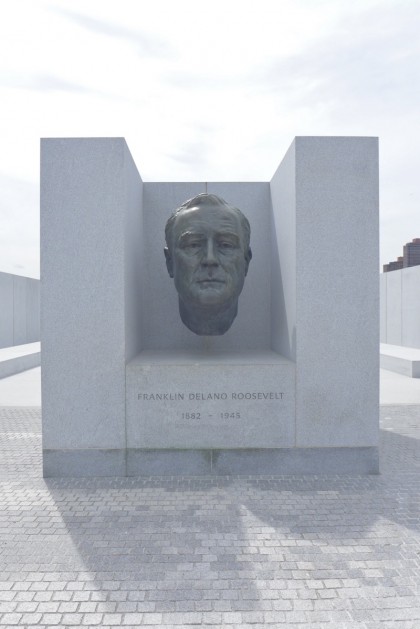 The most interesting part of the Franklin D. Roosevelt Four Freedoms Park, besides the location, is the back story, and if it’s explained at the park I missed it. Briefly: In the 1960s, architect Louis I. Kahn designed a memorial to F.D.R., for whom Roosevelt Island is named (it was Welfare Island before that, and Blackwell’s Island before that). The city, however, went broke before the monument could get built. Wikipedia, take it from here: “In 2005, William J. vanden Heuvel, a former U.N. ambassador and a founder of the Franklin and Eleanor Roosevelt Institute, launched the effort to get the four-acre park built to Kahn’s specifications, gathering more than $50 million in private and public funds. The Franklin and Eleanor Roosevelt Institute subsequently kept the project going over time.” It opened last fall.
The most interesting part of the Franklin D. Roosevelt Four Freedoms Park, besides the location, is the back story, and if it’s explained at the park I missed it. Briefly: In the 1960s, architect Louis I. Kahn designed a memorial to F.D.R., for whom Roosevelt Island is named (it was Welfare Island before that, and Blackwell’s Island before that). The city, however, went broke before the monument could get built. Wikipedia, take it from here: “In 2005, William J. vanden Heuvel, a former U.N. ambassador and a founder of the Franklin and Eleanor Roosevelt Institute, launched the effort to get the four-acre park built to Kahn’s specifications, gathering more than $50 million in private and public funds. The Franklin and Eleanor Roosevelt Institute subsequently kept the project going over time.” It opened last fall.
This was only my third visit to Roosevelt Island in 21 years of living in New York City, and as before, the tram ride was a definite highlight. My friend Andrea and I walked south along the island’s west side, admiring the Manhattan skyline, until we got to a rather unkempt park and the ruins of the Smallpox Hospital, which remain as striking as ever.
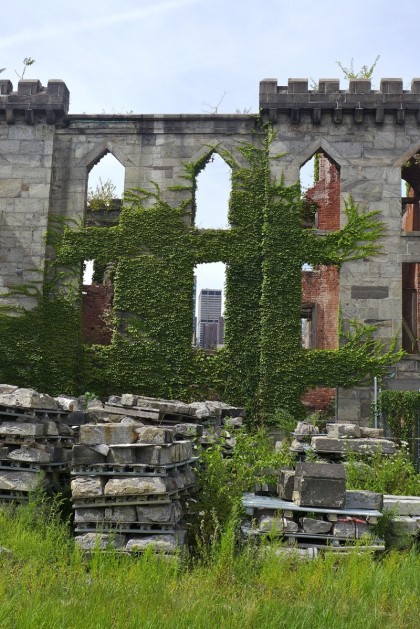
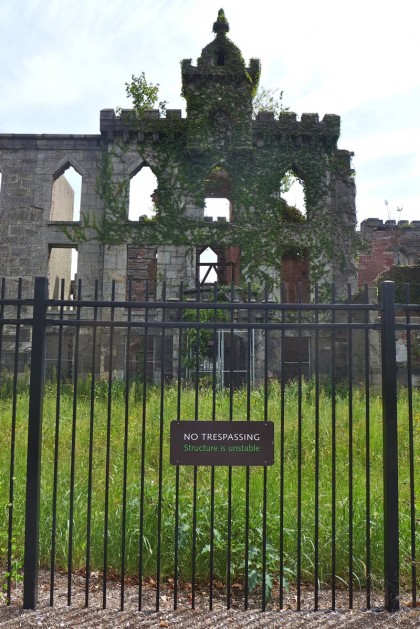 The F.D.R. Four Freedoms Park, at the southern tip of the island, stands in stark contrast to the raggedy parkland north of it. There’s a raised triangular lawn flanked by paths, with a small semi-walled plaza at the end. The phrase that struck me about all of it was “architect’s geekfest,” a place that caresses the neatness fetish that most architects have. It’s all hard lines, with minimal visual noise. It’s like being inside a rendering.
The F.D.R. Four Freedoms Park, at the southern tip of the island, stands in stark contrast to the raggedy parkland north of it. There’s a raised triangular lawn flanked by paths, with a small semi-walled plaza at the end. The phrase that struck me about all of it was “architect’s geekfest,” a place that caresses the neatness fetish that most architects have. It’s all hard lines, with minimal visual noise. It’s like being inside a rendering.
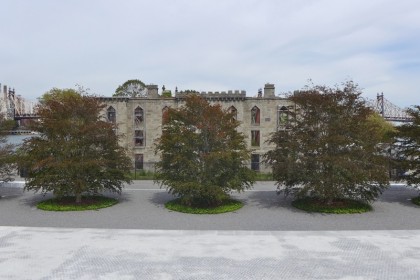
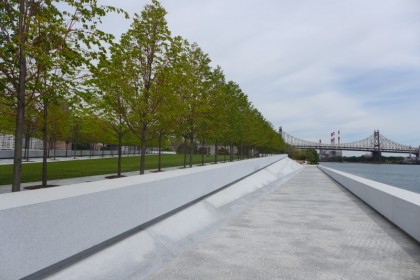
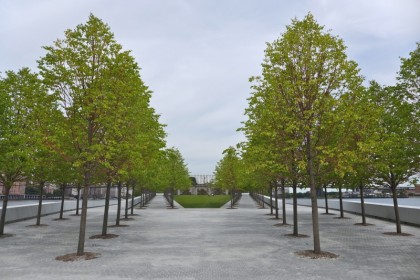
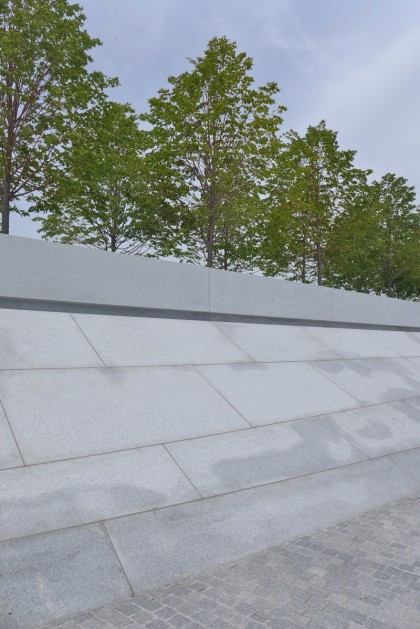 Between the lawn area from the plaza is a slab with a large bust of F.D.R. on one side and the four freedoms—freedom of speech and
Between the lawn area from the plaza is a slab with a large bust of F.D.R. on one side and the four freedoms—freedom of speech and fashion expression, freedom of worship (and from it, I like to think), freedom from want, and freedom from fear—on the other. The freedoms come from a Roosevelt speech in January, 1941.
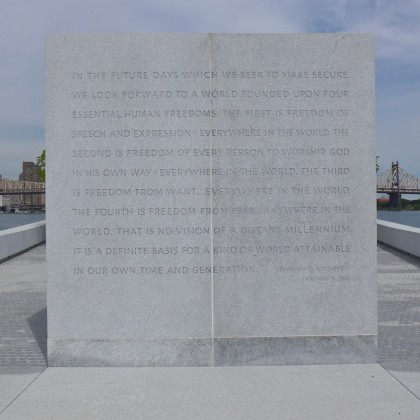 There are walls on the east and west of the plaza—with very narrow spaces in between—while the southern end looks out to the river and harbor, making the plaza both intimate and open, protected and exposed. My main criterion for judging a place is whether it feels like it could exist anywhere else, and in that regard, the park succeeds wildly.
There are walls on the east and west of the plaza—with very narrow spaces in between—while the southern end looks out to the river and harbor, making the plaza both intimate and open, protected and exposed. My main criterion for judging a place is whether it feels like it could exist anywhere else, and in that regard, the park succeeds wildly.
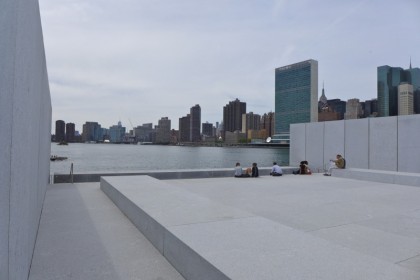
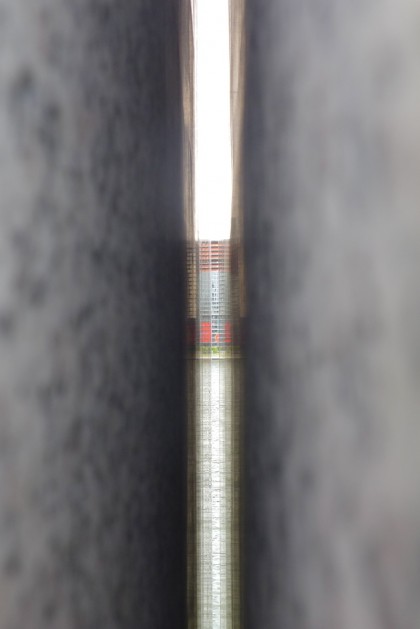 The overall effect is clean and solemn and intellectual to the point of chilly—you can admire it far more easily than you can engage with it. I suppose it is also soothing, but by the time you’ve walked along the river to the park, you’re likely already relaxed.
The overall effect is clean and solemn and intellectual to the point of chilly—you can admire it far more easily than you can engage with it. I suppose it is also soothing, but by the time you’ve walked along the river to the park, you’re likely already relaxed.
For a place that celebrates freedom, there are quite a few rules: no pets; no food, non-water beverages, no glass containers; no climbing the embankments (oops!), no bikes, scooters, or skateboards; no smoking…. Still, you are allowed to sit on the lawn, where yoga classes are occasionally held, and there’s a Great Performances food truck at the northeast end that’s open on weekends. A veritable Museum of Liberal Bumper Stickers, the truck is a welcome bit of humanity.
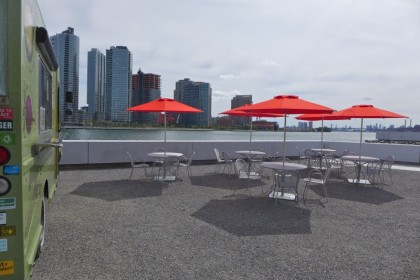
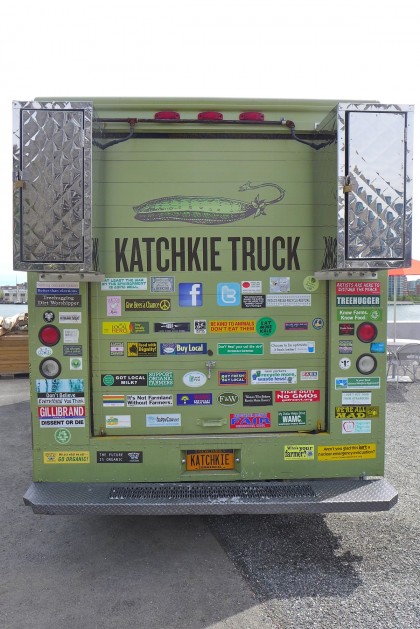 Also of note: According to a sign, a second monument is coming to the area. The FDR Hope Memorial will commemorate Roosevelt as “inspiration for the world’s disabled.”
Also of note: According to a sign, a second monument is coming to the area. The FDR Hope Memorial will commemorate Roosevelt as “inspiration for the world’s disabled.”
 The F.D.R. Four Freedoms Park is free; open 9 a.m. to 7 p.m.; closed Tuesday; fdrfourfreedomspark.org.
The F.D.R. Four Freedoms Park is free; open 9 a.m. to 7 p.m.; closed Tuesday; fdrfourfreedomspark.org.
Previous Field Trip posts:
• Litchfield County, Conn.
• One Wall Street
• Behind the Scenes at Grand Central Terminal
• The Howard/Crosby Microneighborhood
• Federal Reserve Bank of New York
• East River Ferry
• Museum of American Finance
Update: Comments have been turned off due to spam. To have them turned back on, email tribecacitizen@gmail.com.


















i hope gourmet garage comes to TriBeCa East
Great write up and a tough act to follow.
Great post, but you left out some of the pathos of the long path toward getting the monument built. Louis Kahn was carrying the finished designs with him when he died in 1974 in Pennsylvania Station in New York City.
Here’s a video calling for money to build the park narrated by Orson Welles (!!!), who died in 1985. http://www.youtube.com/watch?v=Sic_50bmWK0
As you note, there is no seating at the park. Plus there is no shade, no toilets, and water is $3 a bottle in summer.
Kahn made no provision for security in 1974. In order to preserve the pristine nature of the stone from skateboarders, graffiti artists and potential mischief-makers, a fence was erected between Southpoint Park to the north and the FDR Memorial, encroaching upon the former’s land. The park office is similarly placed on Southpoint Park’s land.
The park’s founders have expressed limited interest in the adjacent FDR Hope Memorial, which is sponsored largely by Roosevelt Island residents and members of its community of disabled individuals.
Residents of Roosevelt Island are not uniformly supportive of thememorial. Like the architect, your discussion overlooks the context and the people.